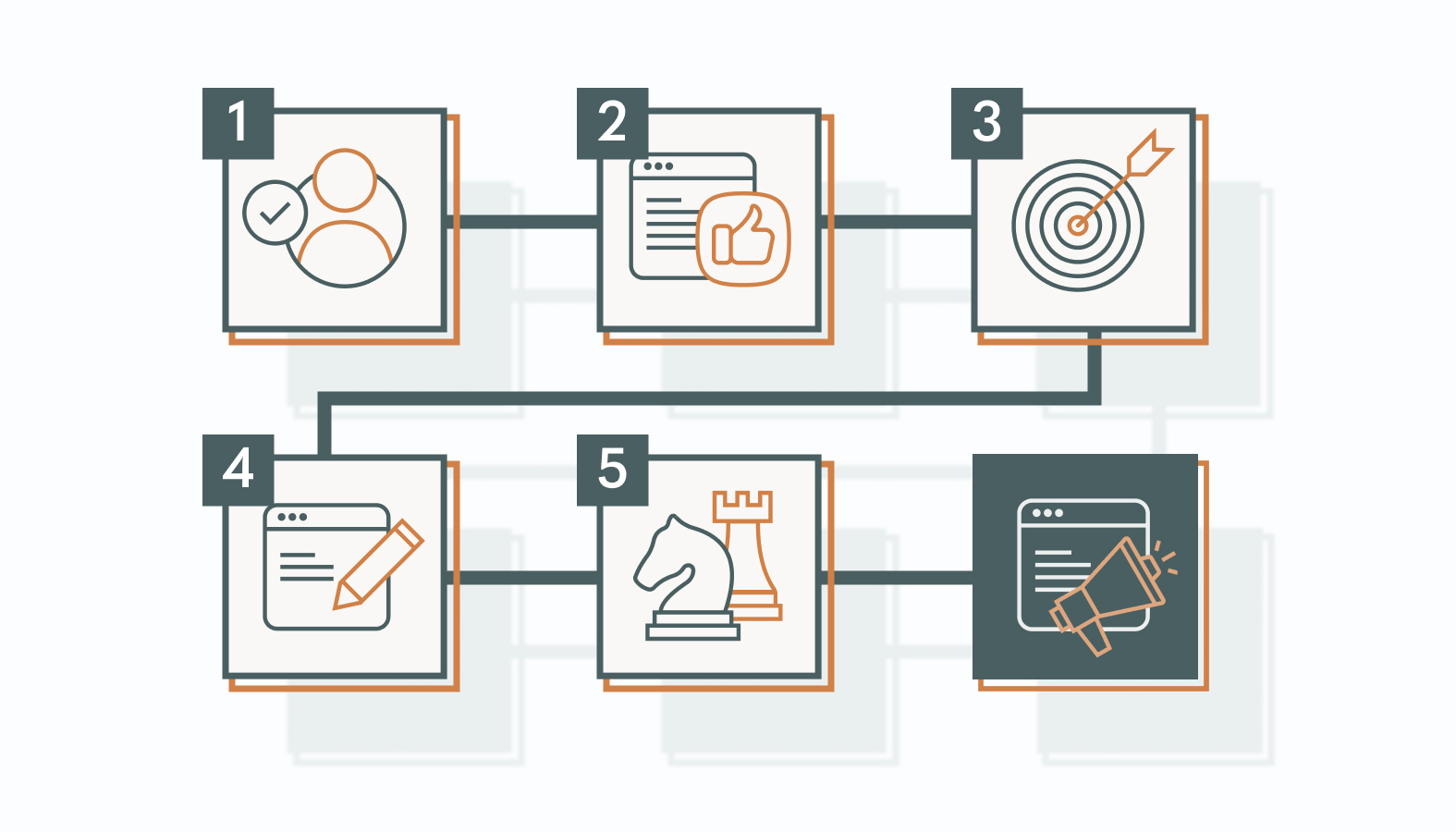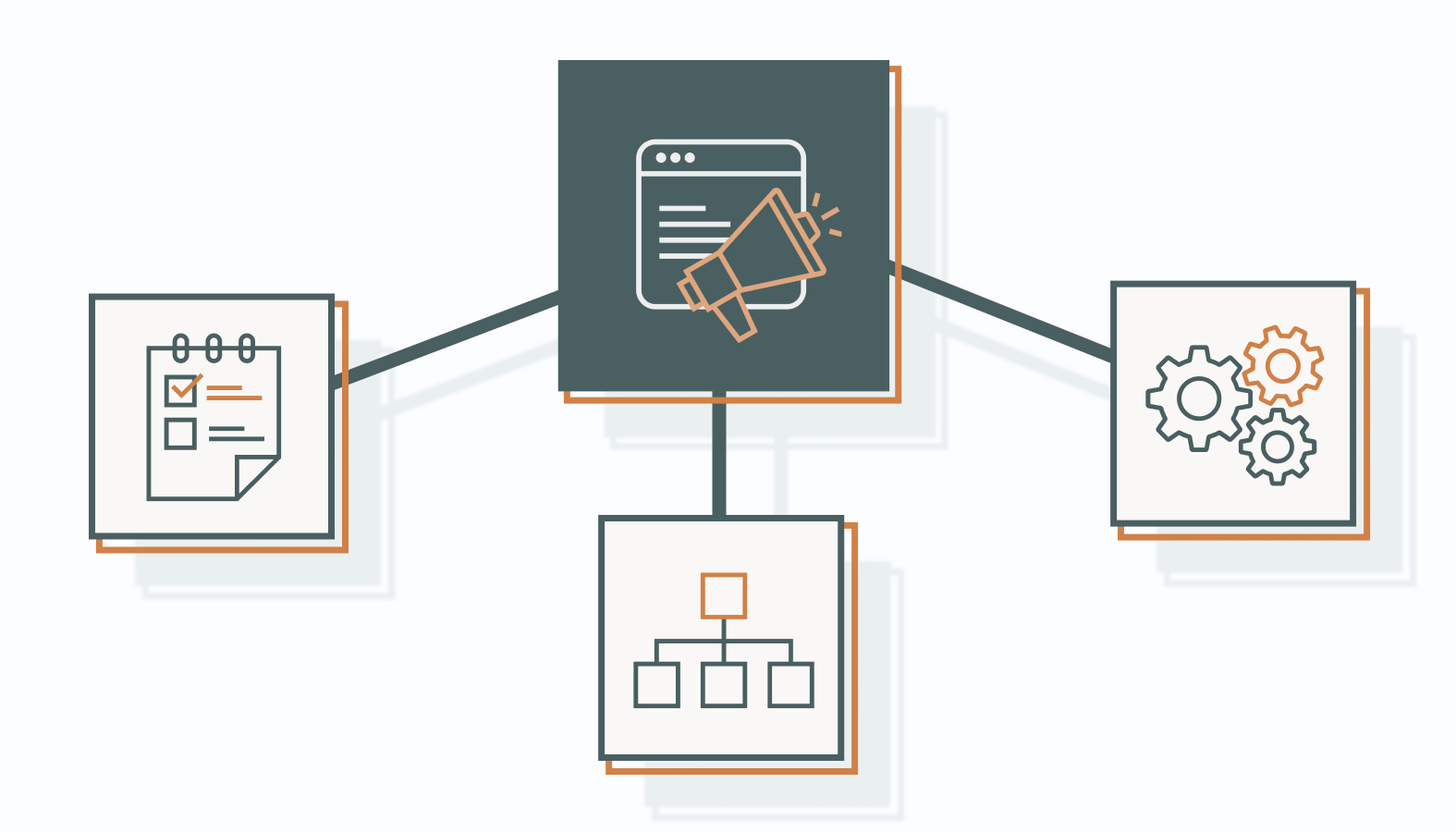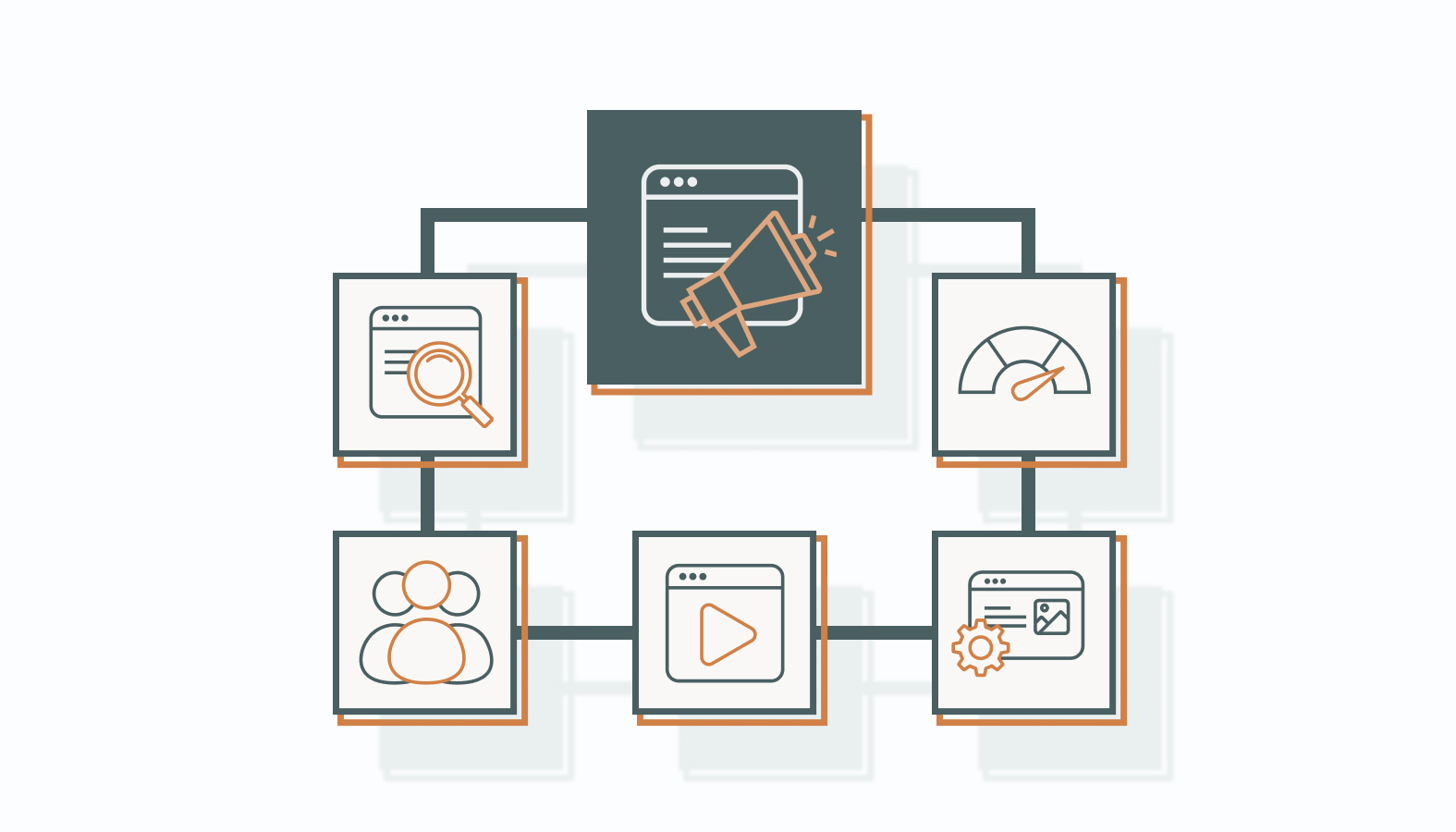Getting your content noticed in today’s noisy digital landscape is a real challenge. You can create the most compelling content in the world, but it’s like shouting into a void if no one sees it.
Many organizations pour time and resources into content creation only to see minimal engagement or impact.
The result? Frustration and missed opportunities.
This is where a well-structured content distribution marketing plan makes all the difference.
Businesses can reach their audience where they already are by strategically sharing content across multiple channels, such as social media, email, search engines, and industry platforms.
The good news is that effective distribution doesn’t have to feel overwhelming. This guide explains the strategies and tools businesses should use to streamline efforts, drive better conversion rates, and maximize results.
What is Content Distribution Marketing?
Whether you’re struggling to extend your reach or connect with your ideal audience, content distribution marketing offers a clear, actionable path to success.
The goal of content distribution marketing is simple: to ensure your content doesn’t just exist but actively contributes to your broader objectives.
This approach isn’t just about being seen—it’s about aligning content efforts with measurable goals, such as increasing traffic, improving conversions, and building lasting customer loyalty.
Businesses can significantly enhance their visibility and engagement by strategically distributing content across various channels.
3 Distribution Channels You Should Know & Use
Owned, earned, and paid channels are the three pillars of content distribution, each with a distinct role in shaping your brand’s presence and impact. Here’s how they work and why they matter:
- Owned Channels: Think of these as your home turf—the platforms you control, like your website, blog, and social media profiles.
Owned channels allow you to craft your message exactly how you want. For example, your blog isn’t just a space for sharing articles; it’s a stage for demonstrating expertise, reinforcing your brand’s voice, and engaging directly with your audience on your terms.
- Earned Channels: These are the accolades you don’t pay for—mentions from media outlets, guest features, and organic social shares.
The beauty of earned channels is the built-in trust factor; when a respected third party vouches for your brand, their credibility amplifies yours.
Imagine the impact of a glowing review from a trusted industry publication—it’s not just exposure; it’s an endorsement.
- Paid Channels: This is where precision meets scale.
Paid channels include tools like search engine ads, social media campaigns, and sponsored content. They allow you to strategically reach the right audience at the right time.
Whether targeting a niche demographic or making a splash with a new product launch, paid channels give you the control to amplify your reach in record time.
The magic happens when these channels work in harmony. Owned channels establish your voice, earned channels validate it, and paid channels extend it. Together, they form a powerhouse strategy to connect, engage, and convert your audience with purpose and precision.
Maximizing Impact with Your Owned Channels
Maximizing the potential of owned channels requires a thoughtful blend of strategy and creativity.
Consistency makes this work—audiences thrive on reliability, so align your posting schedule with their habits and expectations.
But it’s not just about showing up regularly; it’s about showing up with purpose. Each post, article, or update should reinforce your brand’s unique personality and resonate with your audience’s aspirations.
Leverage your audience data as a compass. Dive deep into behavioral insights to uncover what truly captivates your followers. Using data lets you craft tailored content that speaks directly to their interests and needs.
Consider segmenting your audience to deliver experiences that feel personal and deliberate, turning casual viewers into loyal advocates.
This approach transforms your owned channels from static platforms into dynamic, high-impact assets that inspire action and build lasting connections.
Expanding Reach Through Earned Channels
Expanding your reach through earned channels relies on one simple truth: credibility is the currency of influence.
When your brand earns a place in conversations through media mentions, collaborations, or guest content, you’re not just gaining visibility—you’re building trust.
To make the most of earned opportunities, focus on relationships first.
- Engage thoughtfully with influencers, journalists, and key opinion leaders in your space.
- Offer value upfront—whether through exclusive insights, data-driven research or thought leadership that resonates with their audience. These authentic connections pave the way for the organic amplification of your brand.
When executed strategically, earned channels become a powerful vehicle for expanding your audience and positioning your brand as a trusted authority in its field.
Amplifying Presence with Paid Channels
Paid channels can swiftly boost content visibility and allow precise audience targeting based on demographics and interests. This is particularly effective for launching new products or campaigns that require immediate attention.
When incorporating paid channels into your strategy, ensure alignment with your broader marketing goals and budget. This might involve setting clear objectives for each campaign and continuously monitoring performance metrics to adjust strategies dynamically for optimal results.
How to Craft a Results-Driven Content Distribution Plan
Crafting a results-driven content distribution plan is the backbone of impactful marketing. Your goal isn’t just to create amazing content but also to ensure that it reaches the right audience at the right moment through the right channels.
To ensure this happens, you must develop a well-crafted plan. Here’s how you can do this:
1) Understand Your Audience’s Needs
To create strategies that resonate with your audience, start by truly understanding their needs, preferences, and pain points.
Dive into demographic details like age, gender, and location. Leverage behavioral insights to uncover how they interact with content—what grabs their attention and when.
For instance, if your target audience consists of busy professionals in their 30s and 40s, you might discover they engage most with content on LinkedIn during weekday lunch hours.
Or, if you’re targeting Gen Z, platforms like TikTok and Instagram Reels with snackable, trend-driven content may be more effective.
Pinpoint their challenges and aspirations. For example, if your audience frequently searches for ways to improve work-life balance, you could create a blog series with actionable tips or offer a free e-book on time management.
Similarly, a fitness brand catering to beginners could address common concerns—like overcoming intimidation at the gym—through encouraging social media posts and beginner-friendly workout guides.
When your messaging directly addresses what matters most to your audience, it transforms your brand from just another voice into a trusted, go-to resource.
2) Choose the Most Impactful Platforms
Not all platforms are created equal, and selecting the right ones can make or break your content distribution strategy.
The key lies in aligning platform strengths with your audience’s habits and preferences.
For instance, Instagram thrives on visual storytelling, ideal for showcasing a product’s lifestyle appeal or sharing compelling behind-the-scenes glimpses.
On the other hand, LinkedIn is a powerhouse for professional engagement, perfect for B2B brands looking to share thought leadership or industry insights.
Here’s a practical example: A fitness brand aiming to engage younger audiences might use Instagram to post reels featuring workout tips and challenges. Meanwhile, a SaaS company targeting decision-makers could focus on LinkedIn, posting case studies and hosting webinars to connect with prospects.
Evaluate each platform’s user demographics, content styles, and engagement methods. While TikTok might help you reach a vibrant Gen Z audience, Pinterest could shine for brands in design, fashion, or DIY niches.
Don’t spread yourself thin—double down on platforms that amplify your message and match your objectives. A tailored approach beats a scattershot one every time.
3) Define Measurable Goals and Success Metrics
Defining measurable goals and success metrics is the bedrock of a winning content distribution strategy. Without them, you’re essentially flying blind.
SMART criteria—Specific, Measurable, Achievable, Relevant, and Time-bound—help transform vague aspirations into actionable objectives.
For instance, instead of aiming to “increase traffic,” try to “boost website traffic by 20% in the next three months through targeted blog posts.” This level of specificity not only sharpens your focus but also ensures everyone involved is aligned on the endgame.
Next, identify key performance indicators (KPIs) directly correlating with your goals. Let’s say you aim to drive conversions from a downloadable eBook campaign. Track metrics like form submission rates, email open rates, and downstream sales attributed to the campaign.
Conversely, if your goal is to amplify brand awareness, metrics like social media reach, engagement rates, and share of voice become your guiding stars.
But here’s the kicker: regular analysis is non-negotiable. Your dashboard isn’t just a scoreboard—it’s a feedback loop.
For example, if you notice a sharp dip in your click-through rates, it might signal that your call-to-action isn’t resonating. That’s your cue to tweak and test until you find what clicks.
You must stay proactive by continuously monitoring and refining. By doing so, you’re not just setting goals—you’re engineering momentum toward achieving them.
4) Customize Content to Maximize Channel Effectiveness
Customization transforms average content into a powerhouse across multiple channels.
Each platform is its own universe, with its own audience, tone, and expectations. Content needs to evolve with the platform to truly make an impact, not just be a one-size-fits-all approach.
Take social media, for instance.
- TikTok thrives on short, snappy, visually engaging videos. Think of a quick behind-the-scenes clip or a customer testimonial that packs a punch in under a minute.
- Contrast that with LinkedIn, where long-form articles that dive deep into insights, case studies, or thought leadership hold far more weight.
Tailoring your content format and messaging for each platform isn’t just smart; it’s essential. You’re not just talking to your audience; you’re speaking their language, meeting them where they are.
For example, a company offering innovative pool cleaning solutions might share a quirky, time-lapsed video of its process on Instagram—perfect for quick engagement.
But on LinkedIn? They might publish an in-depth article on the evolving landscape of pool technology, adding real value to industry professionals and sparking conversation.
The right content in the right place drives real connections, fosters trust, and ultimately boosts conversions. It’s all about knowing your platforms and, more importantly, knowing your audience.
5) Execute and Evaluate Your Strategy
A well-executed distribution plan gets you closer to success—think of it as the engine driving your marketing machine. It’s not enough to simply launch; you need precision in execution.
Managing your timeline and resources with laser focus ensures smooth, uninterrupted progress.
And don’t shy away from project management tools to keep your team synced and on track. They’re the GPS that ensures everyone is heading in the same direction.
But here’s the secret: execution doesn’t end with the launch. That’s just the beginning.
Constant evaluation is your vehicle for growth.
Regular performance reviews and gathering insightful feedback help you spot areas of improvement before they become roadblocks.
It’s an iterative loop—adjust, refine, and optimize.
By embracing this process, you ensure that your strategy continues to evolve, staying sharp and aligned with your goals.
For example, if you’re running a paid campaign, monitoring click-through rates allows for real-time adjustments to ensure you’re spending smart and maximizing ROI.
Leveraging Cutting-Edge Tools for Seamless Content Distribution
The right tools are crucial for successful content distribution. These tools help you plan, execute, and track your efforts more efficiently.
Using them effectively can reach a wider audience, improve how people interact with your content, and help you achieve your marketing goals.
Must-Have Tools for Streamlined Workflow
Here are the tools you should incorporate into your content distribution:
1) Project Management Tools
Project management tools encourage organized, efficient work.
Think of platforms like Trello and Asana as your digital command center, where tasks are organized, responsibilities are assigned, and progress is tracked in real-time.
These tools don’t just keep things in line—they optimize collaboration, ensuring everyone is working toward the same goal while maintaining a tight grip on deadlines and priorities.
Trello, for example, uses a simple yet powerful board system that allows teams to break down projects into manageable cards. Each card can be customized with due dates, priority levels, and detailed task lists, ensuring team members know exactly where to focus their energy.
With Asana, you get a robust task management system that organizes work into projects with clear timelines, so there’s no ambiguity about what needs to be done, when, or by whom.
The beauty of these platforms is their adaptability. You can easily tailor the layout to fit your team’s workflow, whether you prefer lists, boards, or calendars. They help identify bottlenecks early on by providing visibility across tasks and dependencies.
Imagine juggling multiple projects—these tools allow you to prioritize, assign tasks, and track progress without skipping a beat.
At their core, project management platforms offer clarity and efficiency. They transform chaos into structure, allowing teams to stay aligned, manage resources effectively, and deliver projects on schedule.
2) Collaboration Tools
Modern businesses need the ability to communicate seamlessly and work together in real-time.
Tools like Slack and Microsoft Teams have revolutionized team collaboration, ensuring that productivity doesn’t skip a beat, whether your team is in the office or across time zones.
These platforms are robust hubs for instant messaging, file sharing, and video conferencing, bringing team members closer together no matter where they’re located.
Imagine being able to send a quick message to clarify an issue, share a document instantly, and hop on a video call to resolve a complex matter—all in a matter of minutes.
But these tools aren’t just about convenience. They foster a level of cohesion that drives collaboration.
With Slack, for example, teams can organize discussions into channels dedicated to specific projects, topics, or even casual chats, creating an environment where information flows freely and everyone stays in the loop.
Meanwhile, Microsoft Teams provides an integrated solution where you can chat, share files, and work on documents together in real-time, integrating with other tools your team is using.
What’s amazing about these collaboration tools is their ability to break down barriers—be they geographical, organizational, or communication-based. This enhances team productivity and creativity—no more lost emails or missed connections.
Instead, you get a unified space that keeps everyone aligned, informed, and productive without the clunkiness of juggling multiple platforms.
3) Task Automation Tools
Thanks to automation tools, many of today’s marketing teams conduct smooth and efficient operations.
Tools like Zapier and HubSpot don’t just streamline tasks—they elevate them. Imagine your team being freed from the constant grind of social media scheduling or the tedious task of sending countless emails.
Automation tools take over the repetitive, time-consuming processes, allowing your team to focus on what truly matters: crafting compelling content, building relationships, and driving strategy.
Zapier, for example, connects different apps to automate workflows across platforms. Want to sync your email list with your CRM or automatically post new blog content to all your social media channels? It’s done in the background, silently working to save time and reduce errors.
On the other hand, HubSpot offers a more comprehensive automation suite that manages everything from email marketing to lead nurturing and CRM management.
Integrating these tools enables your marketing efforts to run like a well-oiled machine. That means less time spent on manual tasks and more energy focused on creative, high-value work—whether refining your brand’s voice or analyzing campaign data for key insights.
Key Features of Leading Content Tools
Leading content distribution tools aren’t just about posting your content and hoping for the best. They’re finely-tuned instruments of strategy designed to maximize reach and engagement with the precision of a seasoned marketer.
Each tool has key features that make your content work smarter (not harder) when used correctly.
Analytics
Tools like Google Analytics and SEMrush are the powerhouses of any content marketer’s toolkit. They provide insights such as page views, bounce rates, and user behavior that serve as the pulse of your audience.
For instance, a high bounce rate on a specific page could indicate a disconnect between your content and its promise. Use this data to fine-tune everything, from your headline to your call to action.
Understanding what resonates with your audience can refine your strategy and elevate your content’s performance, turning insights into actionable growth.
Audience Targeting
Precision is paramount when it comes to audience targeting.
Platforms like Facebook Ads and LinkedIn Campaign Manager allow you to drill down to granular details, targeting users based on their demographics, interests, and behaviors.
Imagine running a campaign for a new fitness app. Through Facebook, you can focus on users who follow fitness pages, have recently engaged with workout videos, or have shown interest in gym memberships.
This laser focus ensures that your content reaches the people who care most about it, leading to higher engagement and more meaningful conversions.
The beauty of targeting is that it eliminates wasted impressions, giving you the most valuable audience for your efforts.
Automation
Content distribution doesn’t have to be a manual grind. Automation tools like Buffer and Hootsuite turn the time-consuming process of scheduling posts into a smooth, seamless operation.
Set up your content calendar in advance, and these tools ensure your posts go live at the optimal times, even if you’re miles away or off the clock.
The real win here is consistency. By posting regularly without needing to be glued to your screen, you automatically increase your visibility and engagement.
Whether you’re sharing blog updates, promoting a new product, or even joining conversations on Twitter, automation frees up time while maintaining a steady presence. It helps you stay top-of-mind in your audience’s busy feed.
The combination of these key features ensures that you’re not just getting your content out there—you’re getting it to the right people at the right time, with data-backed insights guiding every step.
Exploring Innovative Solutions
The content distribution landscape isn’t just shifting—it’s transforming. The tools and technologies emerging today are reshaping how businesses reach and engage their audiences.
Take AI-driven platforms, for instance. Tools like Jasper and Phrasee have harnessed the power of machine learning to push content creation and personalization to new heights.
These platforms go beyond basic automation. They analyze audience behavior, preferences, and patterns, then use that data to generate content that speaks directly to your target market.
In simpler terms, it’s about crafting messages that don’t just fit the audience but feel as though they were made for them.
Imagine creating an email campaign that speaks to each recipient using language and offers they’re most likely to respond to—that’s the power of AI-driven personalization in action.
Then, there’s machine learning on a deeper level. Think of platforms like Adobe Sensei and IBM Watson, which integrate complex algorithms to sift through vast datasets.
They don’t just predict trends; they suggest actionable insights to optimize your real-time content distribution. This takes content strategy from guesswork to data-driven precision. The ability to instantly adapt your content based on the latest insights is a game-changer.
The key is to use them to rethink how content is distributed and consumed. Imagine running a campaign where the content adjusts itself in response to real-time performance data. That’s where machine learning steps in—offering constant course corrections and finely tuned content that hits the mark with your audience.
By embracing these forward-thinking solutions, businesses can keep pace with change and stay ahead of the curve.
Expert Strategies for Maximizing Content Reach and Impact
If you aim to expand your content’s reach and maximize its impact, you should also incorporate these advanced strategies:
Enhancing Visibility with Advanced SEO Techniques
To stand out in a sea of content, your SEO game needs to be sharp.
Semantic search is your ally in getting closer to user intent and improving content relevance in search results.
As voice search gains traction, it’s essential to adapt, using natural language and question-based keywords that reflect how people speak.
Staying on top of algorithm shifts is crucial; tools like Moz and Ahrefs are key to refining your SEO strategy and keeping your content visible and performing at its peak.
Forming Strategic Influencer Collaborations
Collaborating with the right influencers can elevate your content’s reach and credibility.
Start by identifying influencers whose audiences mirror yours. Use BuzzSumo to assess their reach and engagement rates.
Building authentic relationships is valuable. Engage with their content, offer value, and ensure mutually beneficial collaborations. This approach creates genuine content promotion that resonates.
Diversifying Content Through Innovative Formats
Engage different audience segments by diversifying your content.
Videos, podcasts, and interactive content—like quizzes or infographics—are powerful tools for keeping your strategy fresh and engaging.
A podcast featuring industry experts could capture the attention of audio enthusiasts while an interactive infographic appeals to visual learners.
Experimenting with new formats keeps your content dynamic, driving more interaction.
Amplifying Reach with User-Generated Content
User-generated content (UGC) is one of the most powerful tools in your arsenal.
Encourage your audience to create content by running contests, offering incentives, or using branded hashtags.
UGC fosters trust and builds community around your brand. When your customers share their experiences, it acts as a credible endorsement, broadening your reach and enhancing your reputation.
Ensuring Success Through Continuous Optimization
Content distribution isn’t a one-and-done deal. It requires continuous optimization. Analytics tools like Google Analytics or HubSpot can be used to track performance across channels.
Gather data, tweak strategies, and iterate based on what’s working (or not). This cycle ensures your tactics stay aligned with goals, keeping your content’s reach and impact consistently strong.
Achieving Mastery in Content Distribution Marketing
Mastering content distribution marketing is less about managing chaos and more about creating cohesion. In the digital landscape, your content strategy must move with precision—each channel and tactic must work in sync for maximum impact.
By leveraging a variety of channels, utilizing top-tier tools, and deploying innovative strategies, you’re not just reaching your audience—you’re forging connections, sparking engagement, and driving action. This is where content becomes more than just information; it evolves into an influential force that resonates and converts.
Don’t sit on these insights. Get to work.
Whether refining your SEO, forming genuine influencer partnerships, or exploring new content formats, it’s time to take action. Your audience is waiting—so let your brand’s voice be heard loud and clear.
Embrace the Potential of Content Distribution Marketing
Diving into content distribution marketing is an exciting opportunity to amplify your brand’s presence. With the strategies shared here, you’re ready to increase visibility and make a real impact in the digital world.
Need more tailored advice? Let’s talk.
Our experts are more than happy to share their knowledge with you in a genuine conversation. Let’s talk about a strong content distribution strategy – authentically and confidentially.
Feel free to schedule a candid conversation with one of our experts » and dive into the world of content distribution with guidance you can trust.
Let’s connect and explore how our expertise can illuminate your brand’s potential.










